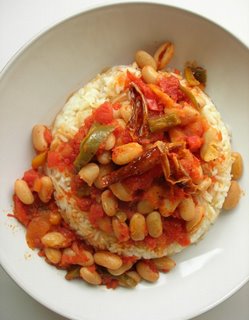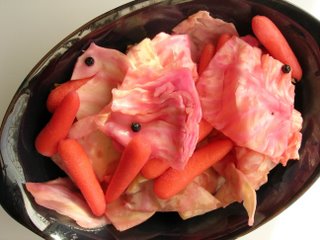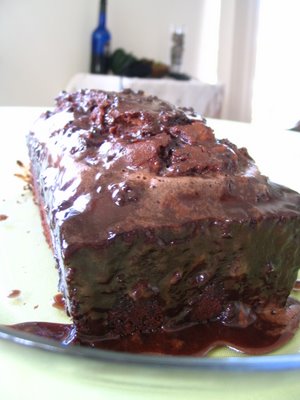
I found these Greek thin noodle nests at an international market. They looked so cute that I had to buy them. On the package it was suggested to cook the noodle nests in water with a little bit olive oil and salt, and to serve as a soup with lemon juice. That recipe sounded blend to me, so I decided to use them in tomato soup, and the result was very tasty. The only drawback, which is not actually a drawback, was that I had to eat my soup with the help of a fork. As you can see from the picture below noodles were a bit long for a spoon!

4 Greek thin noodle nests (the brand I got was Misko)
1 can of organic diced tomatoes processed in a food processor OR 3 tomatoes, processed / blended OR 2 cups of tomato juice
2 tbsp olive oil or butter
1 small onion, finely chopped
1 clove of garlic, sliced (optional)
1 banana pepper or red pepper, chopped
4 cups of vegetable stock or water
1 tsp paprika
1tsp of peppercorns (optional)
1 tsp ground black pepper
1 tsp pepper flakes (optional)
1/2 bunch parsley, finely chopped
-Heat the oil in a broad pot. Saute onion and pepper until soft. Add paprika and constantly stir for at most a minute (burnt paprika is useless)
-Stir in the tomato. Bring to a boil. Cook for 5 minutes. Add vegetable stock, black pepper, pepper flakes, and salt. Bring to a boil and cook for 2-3 minutes. Turn down to medium.
-Place the noodle nests. Cook for 5 minutes on low-medium. Do not let it boil vigorously and do not cook more than 5 minutes, you may lose the nest shape.
-After 5 minutes, turn it off and add parsley.
I switched back to parsley again for Weekend Herb Blogging which is founded and hosted by Kalyn of Kalyn's Kitchen. Kalyn is also among the hosts of the Menu for Hope event. For more information visit either Kalyn's blog or Chez Pim.


















